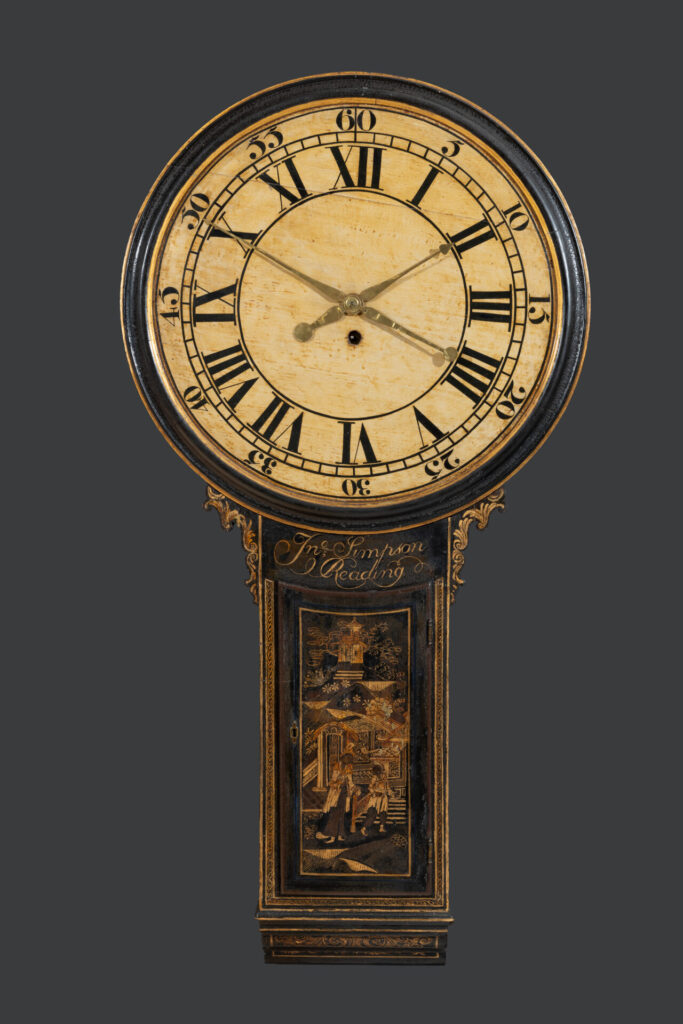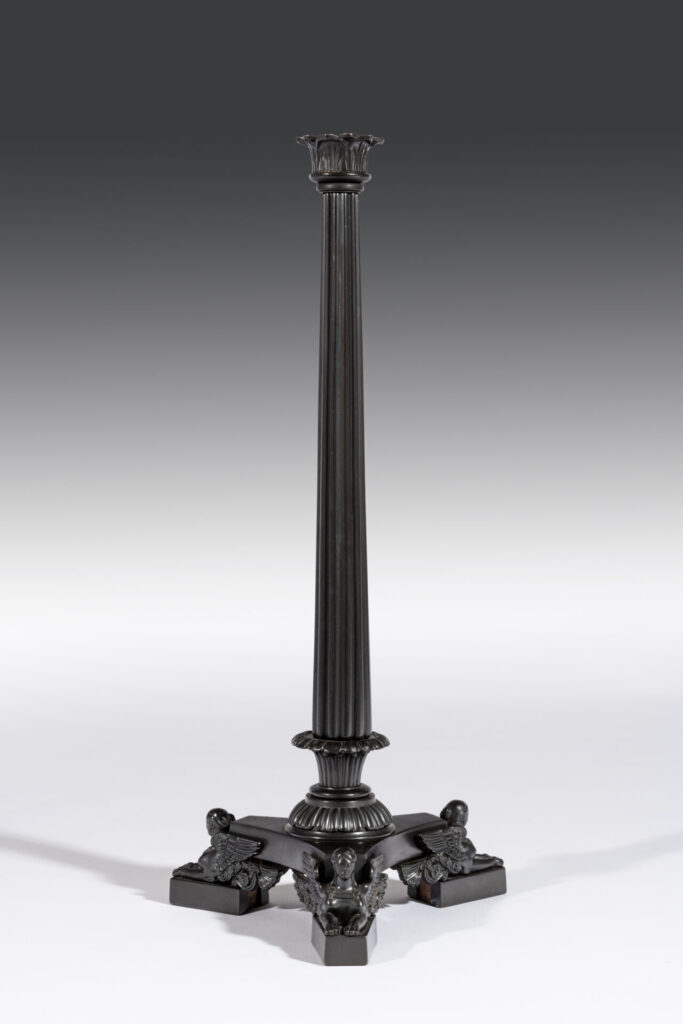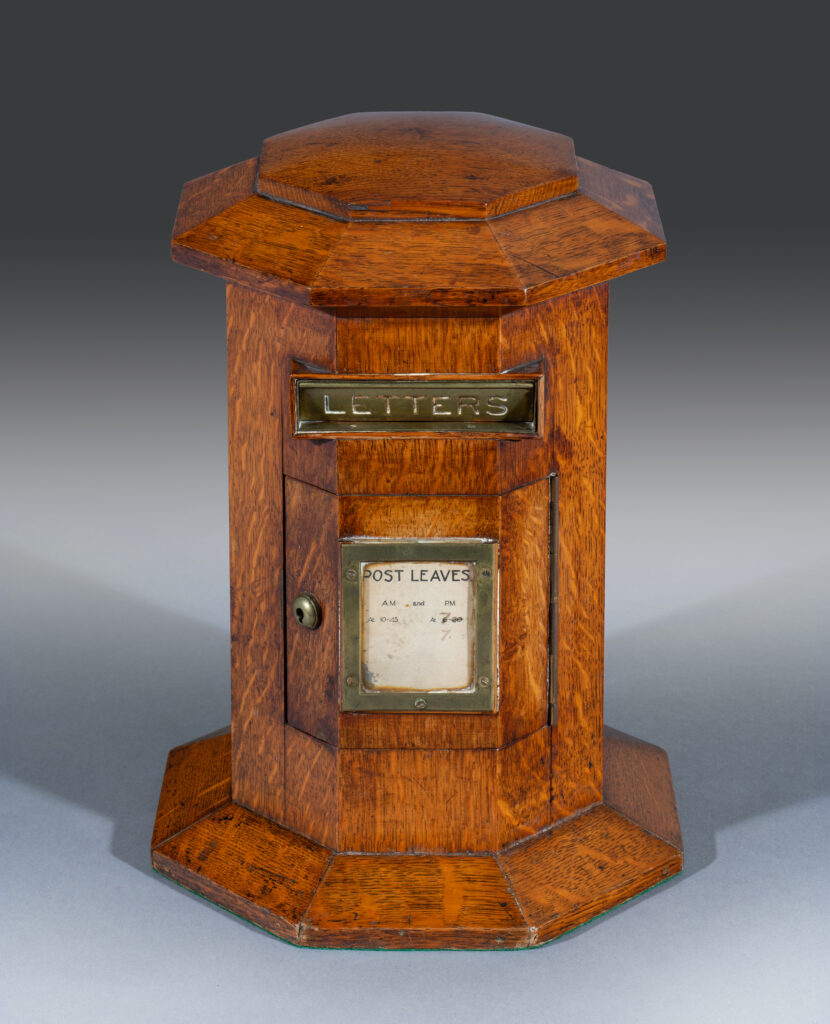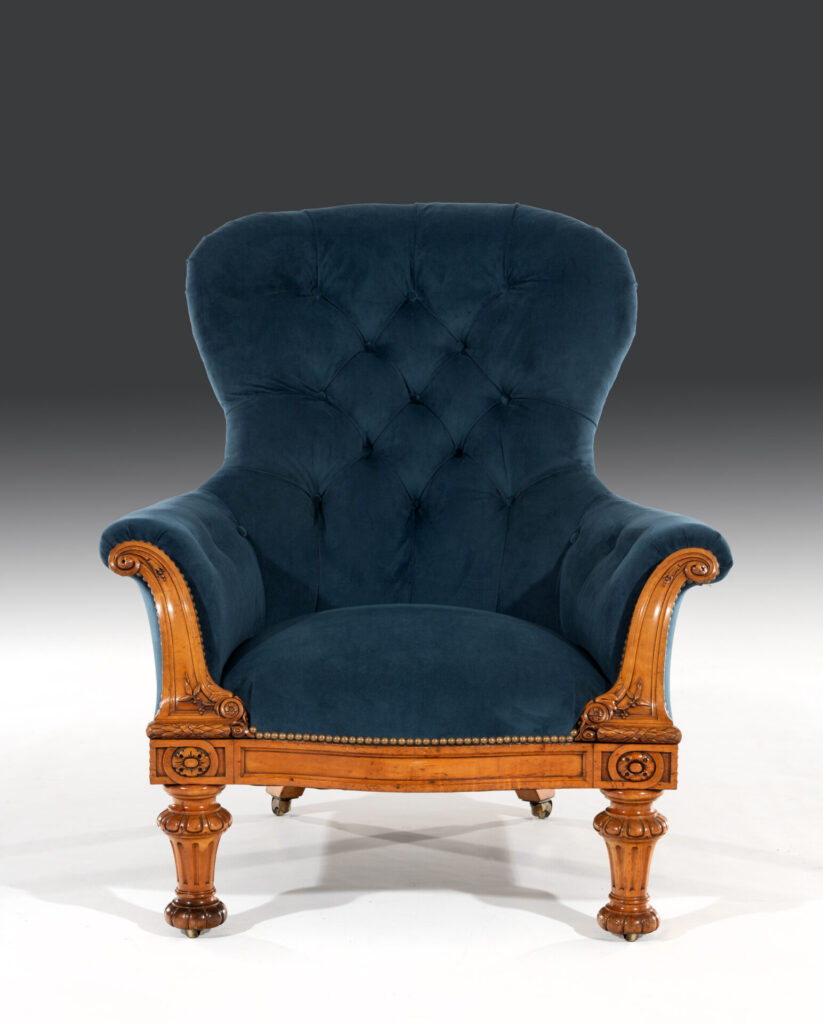18th Century Tavern Clock


18th Century Tavern Clock
English
circa 1775 - 1785
George III 18th century chinoiserie tavern clock by John Simpson of Reading.
The weight-driven 8 day timepiece has a large 29 inch cream painted 2 piece wooden dial with Roman numerals, Arabic outer 5 minute markers, and features counter weighted polished brass hands.
The case has black and gold ebonised chinoiserie painted decoration, featuring figures, houses, temples, trees and flowers. There is further gold painted floral decoration to the sides and underside.
The 8 day movement is driven by a large lead weight with a short drop and the original brass pendulum. The movement and case are original and have never been separated. It comes with two keys and a winding key.
It is sold in full working order and guaranteed for 12 months from the date of purchase.
The maker John Simpson is a ‘known’ maker, working in Reading (Berkshire) from 1775.
Ref: Brian Loomes - 'Watch and Clockmakers of the World', (complete 21st century edition, p.711).
Act of Parliament Clocks, more commonly known as Tavern Clocks, were displayed in Inns and Taverns throughout the United Kingdom beginning in the mid-18th century. Such clocks were plain in design, the faces were round, two to five feet in diameter, and hung on a wall. The term Act of Parliament Clock came about long after these clocks were already in existence. In 1797, a tax against clocks (of 5 shillings) was introduced by the then Prime Minister William Pitt. The tax was very unpopular among clockmakers and was repealed after nine months. The large clocks in Inns and Taverns were later widely (though incorrectly) said to have been developed as a response to this tax. They were however used by Landlords as the definitive time for ‘last orders’ and ‘opening/closing times’. Large enough for anyone (whatever state they may be in) to see the time from a distance. Inns and Taverns were regular and scheduled stopping points for stagecoaches travelling between towns and cities, so these clocks helped people follow timetables ensuring they would not miss their ongoing connections.
Literature
'The maker John Simpson is a ‘known’ maker, working in Reading (Berkshire) from 1775.'
Ref: Brian Loomes - 'Watch and Clockmakers of the World', (complete 21st century edition, p.711).
Act of Parliament Clocks, more commonly known as Tavern Clocks, were displayed in Inns and Taverns throughout the United Kingdom beginning in the mid-18th century. Such clocks were plain in design, the faces were round, two to five feet in diameter, and hung on a wall. The term Act of Parliament Clock came about long after these clocks were already in existence. In 1797, a tax against clocks (of 5 shillings) was introduced by the then Prime Minister William Pitt. The tax was very unpopular among clockmakers and was repealed after nine months. The large clocks in Inns and Taverns were later widely (though incorrectly) said to have been developed as a response to this tax. They were however used by Landlords as the definitive time for ‘last orders’ and ‘opening/closing times’. Large enough for anyone (whatever state they may be in) to see the time from a distance. Inns and Taverns were regular and scheduled stopping points for stagecoaches travelling between towns and cities, so these clocks helped people follow timetables ensuring they would not miss their ongoing connections.
Dimensions
Height 150.00cm (59.06 inches)
Depth 20.00cm (7.87 inches)
Diameter 74.00 (Dial)cm (29.13 inches)
Stock No: 11505
£10,750.00
In-stock




